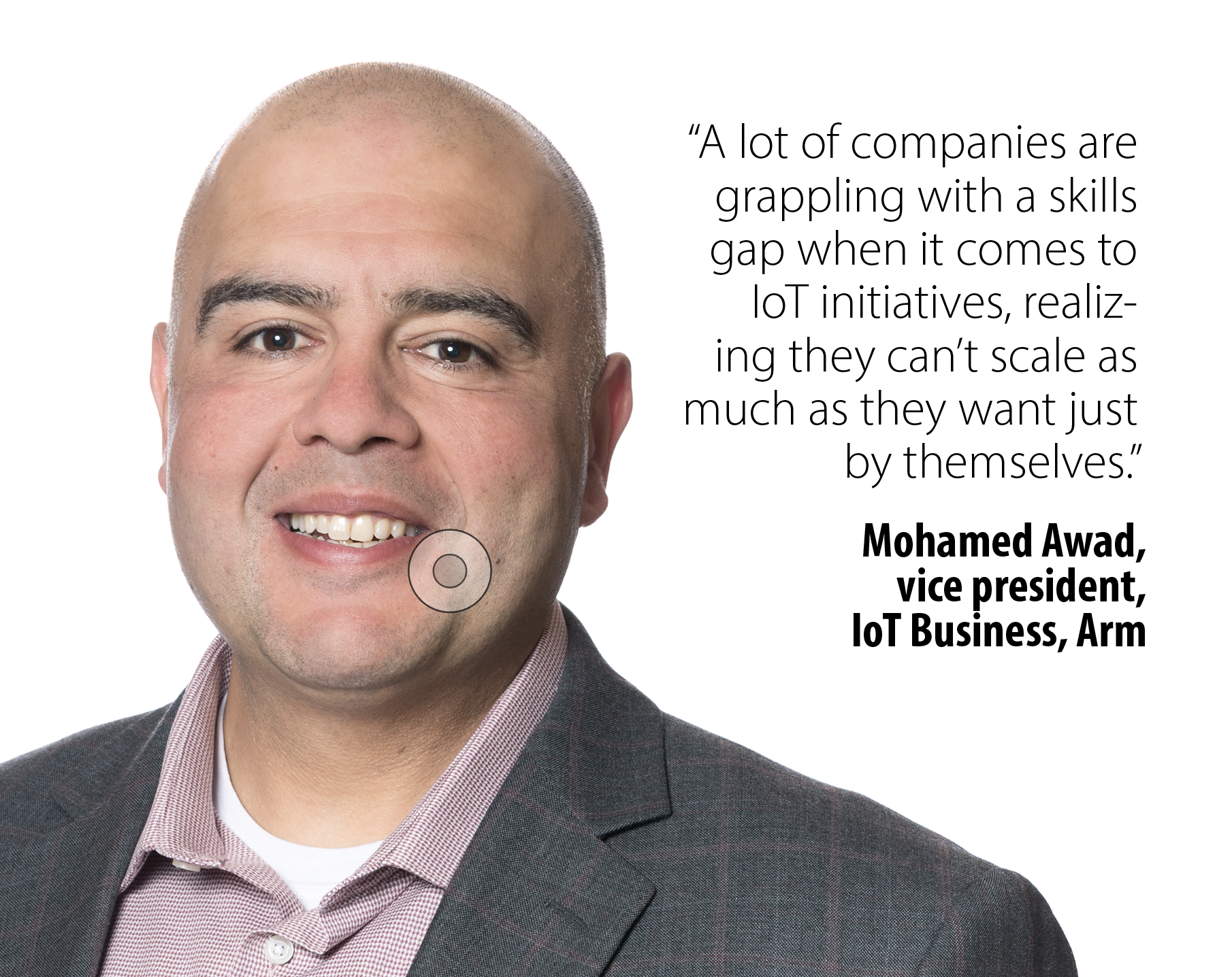In 2017, Kurt Busch was suddenly a man in a hurry. He had a lightbulb moment watching his youngest child talk with his iPad, and in that instant saw an opportunity to drive artificial intelligence and machine learning innovation into voice-activated systems and transform how they work. But he had challenges: in 2017, his company, Syntiant, had only just formed, and while he had a talented, veteran engineering team, it was by no means huge. He needed to figure out how his company could punch above its weight, and quickly.
Syntiant is emblematic of many companies embarking on IoT journeys, with the aim of capturing new data sources to transform their businesses and their customers’ experiences. They have the laser-focused drive and innovative spirit, but they’re often startup-sized or just entering the world of IoT. And getting from concept to product can seem daunting and difficult.
Syntiant did what a lot of successful IoT companies do: it focused on its strengths and leveraged an ecosystem for the rest. In fact, the force-multiplier effect of ecosystems is what a lot of IoT innovators look to today, according to a new report from Forrester Research, commissioned by Arm. Forrester polled 177 decision-makers at original equipment manufacturers (OEMs) and independent software vendors (ISVs) that have developed or adopted IoT devices or applications.
The skills gap can stall IoT development
 A lot of companies are grappling with a skills gap when it comes to IoT initiatives, realizing they can’t scale as much as they want just by themselves. Ninety-eight percent of those surveyed by Forrester reported challenges across all stages of development, with a lack of analytic skills to transform IoT data into actionable insights, and a general lack of technology skills or expertise seen as the top barriers.
A lot of companies are grappling with a skills gap when it comes to IoT initiatives, realizing they can’t scale as much as they want just by themselves. Ninety-eight percent of those surveyed by Forrester reported challenges across all stages of development, with a lack of analytic skills to transform IoT data into actionable insights, and a general lack of technology skills or expertise seen as the top barriers.
Respondents acknowledged that while core expertise is well in hand, they need help building out complete solutions and want to leverage existing standards-based technologies to speed up development. One senior product manager at a consumer-products company said: “Compatibility and flexibility of third-party devices is a challenge. There are so many different operating systems and embedded devices communication protocols that are being used, so we have to balance our software and hardware requirements when designing a device.”
The majority of respondents are more than willing to seek outside expertise to tackle their challenges. Here, tech ecosystems are an important path to productization. These ecosystems deliver everything from IP cores to software up and down the stack, to design and verification services to foundry capacity. And while the industry has embraced ecosystems increasingly over the years, they’re crucial today, given the intense time-to-market pressures IoT innovators face.
Collaboration is key to a connected world
The IoT market is continuing to evolve with unlimited potential across use cases from smart healthcare to industrial robotics, but end products are so much more than pure functionality. Consider security or connectivity. One of the biggest development concerns for OEMs and ISVs revolves around security, with a quarter of decision-makers reporting they face security challenges when developing IoT solutions.
Of this group, over half struggle to ensure cloud data security, network security, and device security across a growing range of hardware. An endpoint device manufacturer may have security solved in its own technology, but that doesn’t mean they’ve considered network or cloud security. The same holds true for connectivity; respondents to the Forrester report have encountered challenges around multiple connectivity options, connecting legacy devices, dealing with connectivity in adverse conditions, and providing connectivity across licensed and unlicensed spaces.
When it comes to implementing artificial intelligence (AI) and machine learning (ML), similar challenges surface, with 30 percent of decision-makers raising concerns around the required level of processing, including at the edge and endpoint within cost constraints. In all these cases, the “crowd-sourced” expertise of a technology ecosystem can smooth the path.
Security experts can work with teams to help them think through downstream security issues that they should consider, ensuring security starts at the chip level; connectivity experts can smooth bumps in the road with either flexible hardware IP or software solutions; and IP and silicon solutions from various vendors can help optimize AI and ML solutions, especially as the era of heterogeneous compute matures.
Distributed compute and the promise of IoT
Foundational to the scale-out of IoT and extracting real value from data is distributed compute. Respondents in the survey see distributed compute as a key differentiator for their businesses. Nearly 60 percent of business leaders have already implemented or are expanding implementations of distributed-compute technologies with connected devices, in order to process insights captured from these connected environments.
More than 40 percent are piloting or plan to implement distributed compute capabilities in the near future. This embrace and understanding of distributed compute is happening because innovators realize that the old one-size-fits-all approach to electronics development no longer works. IoT is a completely different animal, with almost limitless applications possibilities and myriad ways to implement winning solutions.
It’s not just about running software on top of a CPU anymore. Even adjacent solutions might be completely different designs: one containing a power-efficient CPU and a GPU, the other handling different workloads by distributing the computing duties to a CPU, GPU, vision and neural processors. Leading IoT innovators realize this, which is one reason 94 percent of decision-makers at firms developing IoT solutions want to work with an ecosystem to enable technology synergy and get to market faster.
Kurt Busch and his team at Syntiant leveraged technology ecosystems to speed their startup journey, leveraging expertise in services, consulting and EDA tools where they needed to. Four years later, they have delivered two AI chips into the market, shipped more than 10 million units, had their technology certified on Amazon Alexa, been honored at CES, and raised more than $65 million in venture capital.
This is a new, more complex world, where the journey to successful IoT implementations will take a village. We are already seeing the Arm ecosystem approaching challenges differently, to deliver innovative IoT products in an efficient and secure way, and I look forward to seeing more companies accelerate their IoT journey from lightbulb moment to revenue.

